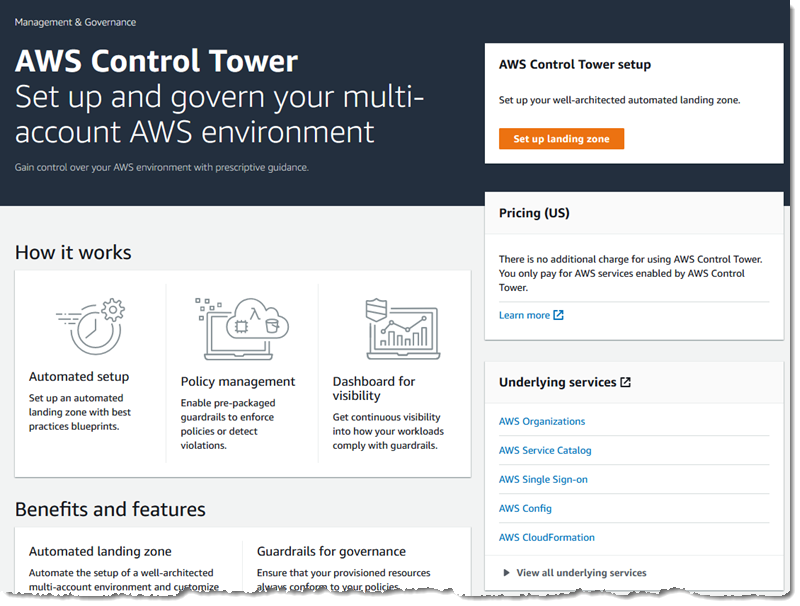AWS News Blog
Category: Management Tools
AWS Control Tower – Set up & Govern a Multi-Account AWS Environment
Earlier this month I met with an enterprise-scale AWS customer. They told me that they are planning to go all-in on AWS, and want to benefit from all that we have learned about setting up and running AWS at scale. In addition to setting up a Cloud Center of Excellence, they want to set up […]
New – Updated Pay-Per-Use Pricing Model for AWS Config Rules
AWS Config rules give you the power to perform Dynamic Compliance Checking on your Cloud Resources. Building on the AWS Resource Configuration Tracking provided by AWS Config, you can use a combination of predefined and custom rules to continuously and dynamically check that all changes made to your AWS resources are compliant with the conditions […]
New – Query for AWS Regions, Endpoints, and More Using AWS Systems Manager Parameter Store
Update (August 8, 2021) – Added single quotes around the parameters passed to jq so that they are not processed by the shell. In response to requests from AWS customers, I have been asking our service teams to find ways to make information about our regions and services available programmatically. Today I am happy to […]
Boost your infrastructure with the AWS CDK
This guest post is by AWS Container Hero Philipp Garbe. Philipp works as Lead Platform Engineer at Scout24 in Germany. He is driven by technologies and tools that allow him to release faster and more often. He expects that every commit automatically goes into production. You can find him on Twitter at @pgarbe. Infrastructure as […]
New – CloudFormation Drift Detection
AWS CloudFormation supports you in your efforts to implement Infrastructure as Code (IaC). You can use a template to define the desired AWS resource configuration, and then use it to launch a CloudFormation stack. The stack contains the set of resources defined in the template, configured as specified. When you need to make a change […]
New – AWS Systems Manager Session Manager for Shell Access to EC2 Instances
Update (August 2019) – The original version of this blog post referenced the now-deprecated AmazonEC2RoleForSSM IAM policy. It has been updated to reference the AmazonSSMManagedInstanceCore policy instead. It is a very interesting time to be a corporate IT administrator. On the one hand, developers are talking about (and implementing) an idyllic future where infrastructure as […]
Extending AWS CloudFormation with AWS Lambda Powered Macros
Today I’m really excited to show you a powerful new feature of AWS CloudFormation, we’re calling Macros. Macros allow developers to extend the native syntax of CloudFormation templates by allowing AWS Lambda powered transformations on templates.
Amazon SageMaker Updates – Tokyo Region, CloudFormation, Chainer, and GreenGrass ML
Today, at the AWS Summit in Tokyo we announced a number of updates and new features for Amazon SageMaker. Starting today, SageMaker is available in Asia Pacific (Tokyo)! SageMaker also now supports CloudFormation. A new machine learning framework, Chainer, is now available in the SageMaker Python SDK, in addition to MXNet and Tensorflow. Finally, support […]







